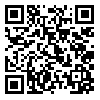BibTeX | RIS | EndNote | Medlars | ProCite | Reference Manager | RefWorks
Send citation to:
URL: http://bloodjournal.ir/article-1-739-en.html
Abstract
Background and Objectives
The production of a sufficient number of pancreatic endocrine cells that function similarly to primary islets is one of the methods in treatment of diabetes. The CD133+ cells derived from cord blood (UCB-CD133) express some embryo specific markers such as SSEA-4 and OCT4 and so it can be a candidate for differentiation into insulin secreting cells. Therefore, here we attempt to determine the differentiation potential of UCB-CD133+ cells into insulin secreting cells in vitro.
Materials and Methods
UCB-CD133+ cells were isolated by MACS and differentiated into insulin secreting cells using the medium containing DMEM/F12, bFGF, Nicotinamid, and supplement B27 N2 for 9 days. The expression of insulin and c-peptide protein was detected by immonocytochemistry. The expression of insulin, Nkx6.1, Pdx1, and Glocagon genes was analyzed by RT-PCR ELISA was performed to analysis the function of differentiated cells in different glucose concentrations (5 and 27 mM).
Results
Our results determined that UCB-CD133+ cells expressed insulin and c-peptide at protein level after 9 days of culture. However, the insulin, Nkx6.1, Pdx1, and Glocagon genes were not detected in differentiated cells and they could not respond to different concentrations of glucose.
Conclusions
We suggested that UCB-CD133+ cells can differentiate into insulin secreting cells in vitro however, they are not functional and need to receive more signals in vivo.
| Rights and permissions | |
 |
This work is licensed under a Creative Commons Attribution-NonCommercial 4.0 International License. |





